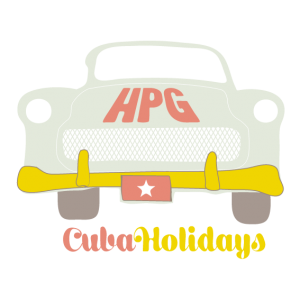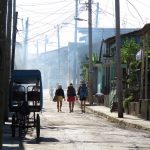The classic cars of Cuba
Flashy colours, rounded corners, unparalleled style and last-century glamour characterise Cuba's four-wheeled national treasure, the multi-photographed and still in motion '50s classics that flood the streets of the capital.
Heart from the '50s
Together with the stories of the life of E. Hemingway, along with the famous cocktails you enjoy in one of the numerous cafés of Habana Vieja, next to the cabarets that only in Cuba are still in their prime, next to the colonial architecture that blends perfectly with the landscape, in the back seat of a shiny Oldsmobile convertible, well, you don't need much to believe that you have magically landed in the past.
The responsibility for this spectacular spectacle - rightly exploited as a tourist attraction - lies with Fidel Castro's decision to make it illegal to import cars without a government permit upon his rise to power in 1959. As if that wasn't enough, after '62 and the US embargo, importing American models became virtually impossible, as did, by extension, finding certified parts. As a result - although restrictions on the purchase of cars have been gradually lifted since 2011 on the initiative of Fidel's brother, Raul Castro - the situation is as follows: some 60,000 Cadillacs, Chevrolets, Chryslers, Dodge, Fords, Buicks and as many Soviet-style Lada, Volga and Moskvitch cars that ended up in the country during the Cold War constitute the island's museum car fleet.
But how did these thousands of antiques withstand the many years of use that they were destined to receive and the many kilometres that the speedometers were expected to record? "When you can't do otherwise, you have to make do with what you have", says the popular saying, so, out of necessity, the resourceful Cuban mechanics excelled in the reconstruction-repair of the measured cars they had in their hands, with all the technical interventions being done with materials they already had at their disposal.
When a car cannot be repaired, in Cuba it is used for spare parts; this is the rule. So, the classic "doll" coming down the Malecon avenue may have the original (flawless) look from the '50s, but its heart is at least original. Pop the hood and you'll find everything you can imagine in terms of engines or other improvised, Chinese or Russian mechanical parts, which elevates the "makers" to true inventors and also gives a collector's touch to vintage works of art as those interested are willing to pay two and three times their original value to acquire them.
Therefore, although nine out of ten families do not have a means of transport, those lucky enough to own one of these magnificent hybrids bring them out in public at weddings, celebrations and tourist tours, for them they are an integral part of their culture and they will hardly part with them. The majority of them, however, operate as taxis - the so-called 'almendrones' - which for the most part take specific routes, mainly in Havana and Varadero.
Every car has its own story. Once you spot them lined up on the side of the road, all you have to do is pick your favourite model and if you're interested in the subject, ask your driver how he managed to preserve his own piece of the legend.
from the Elektra Fatourourou





